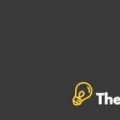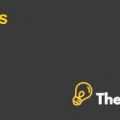Merck Sharp & Dohme Argentina, Inc. (A) Case Study Analysis
He effectively implemented internal communication strategies & corporate listening. Also, he actively drives the alignment of the alignment of the organization through improved internalcommunication and improved performance management significantly improves the engagementof employees and build leadership capability. He also transformed the way all the departments within an organization worked and highlighted the importance of collaboration and co-ordination and knowledge sharing from one department to another to embed the principles of the creativity and innovation into the business model and to encourage the culture of participation, mutual trust, empowerment, and innovation.
Specific advice to executives of Merck Sharp & Dohme
To address the cultural issue emerging within an organization, it is significantly important for the company to drive the cultural transformation. It is important that the workplace culture celebrates the diversity of thoughts, transparency, opportunities and the opinion of all the enrich conversation. It should take the people to focus approach for the purpose of engaging the employees with listening to drive the cultural change, hence ultimately affecting the bottom line of the company. The widespread change within the organization is only possible when all the employees are involved and engaged in the process. The short term recommended policies and action strategies include; immediate cultural immersion, initiate zero-tolerance and dialogue with workers opening doors to a deeper understanding of an unfamiliar environment or workplace.
The company should create new work and service offerings as well as fostering an environment of exploration, imagination and acceptable risks and what if’s. The company needs to define the change management objective at workplace through assuring that there is an active sponsorship at the senior executive level for the change within the organization, gaining buy-in for the change from those affected or involved in direct or indirect manner, addressing and assessing how the change would impact the people, and getting people ready to adapt the change.
In addition to this, it is important for the organization that contemplated to create the family oriented culture to take into consideration four interrelated components (Andreassi J., (2004),) which are as follows;
- First and foremost, designing and implementing the policies, benefits, and practices in order to help the workforce within an organization in achieving the balance between the family life and work life – private including supporting care program for dependents and flexible working schedules.
- Secondly, the company needs to create the climate and cultures at the organizational workplace that mirrors the concerns for the employees’ life outside the workplace.
- In addition to this, it is important to encourage work relations, which tend to act in accordance with employees' responsibilities outside the work.
- Finally, the company needs to review structures, systems, processes and the current work practices, which in turn would likely creating the overwork and unnecessary stress for the employees.
Shortly, the company needs to change from the completely disengaged organization to the family oriented culture that is transparent and caring in designing the company’s future. The company needs to be focused on employee engagement, culture, training and development.
Furthermore, the company needs to implement the new internal communication strategies as well as a practical tool such as corporate listening, which would be facilitated in the strutting environment. The company also needs to utilize the opportunities for the workforce to be heard in the skip level meetings and fairness committees. The company should adopt the forward looking corporate strategy which would ignite the cultural shift. This strategy would provide the basis for tracking the progress and the company can motivate the employees by establishing the SMART goals.
It is critical to appreciate that knowledge resources are a crucial resource that has a heightened capability of contributing to the sustenance of competitive edge in an organization. In a changing marketplace, it is important for organizations to focus on influence dynamic as the foundation for offering insight into knowledge sharing and employee engagement as the way forward to enhancing partner performance. Given the significance of the trust and leadership in knowledge sharing, the leaders need to implement considerations in an attempt to enhance the performance within a team and to increase knowledge sharing. The cultural values of the company should include; griping and determining the change, creating determination and passion in the working environment, making goal oriented and efficient teams, build a positive energetic team that shows spirit and willingness to work for the company as its family.
The company needs to define the performance standards on the basis of the understanding of what the company and/or department stands for, it is quite easy for creating the expectations. Such expectation needs to be based on core values that should be embraced by everyone to build a trusted culture, the team would be efficiently operating with the clean mind state also, they know that the political road blocks would not disrupt their momentum.
The leaders are critically required trust and maturity in themselves so that they would be able to build the family environment at the workplace. The family environment within the organization or in departments that is successfully build by the leaders, they not only gain in short term but also build the foundation of the hard work, determination, and perseverance for the long run (Llopis, 2012).
To lead the change, the company needs to set its expectations and run the skill building workshops so that it would most likely achieving the outcome focused on personal objectives. The company needs to create a deeper emotional connection. The company needs to realize that sustainable change to the business strategy should be highly supported by the complimentary shifts in organizational culture. The company should maintain optimism over what is possible for the workforce to adapt to and to achieve. It should also narrow its focuses on the impact that the cultural or organization levers on the change strategy (DRIVING POSITIVE CULTURAL CHANGE, 2015).....................
This is just a sample partical work. Please place the order on the website to get your own originally done case solution.











